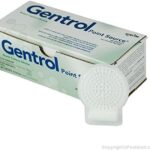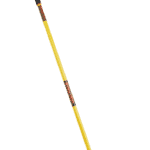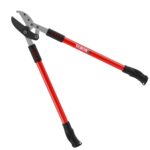A pinched nerve can be a real pain. It happens when tissues like bones, muscles, or tendons put too much pressure on a nerve. This can cause symptoms like pain, numbness, tingling, or weakness in different parts of your body. Sometimes, it can feel like burning or “pins and needles.”
Rest is the most important first step. To start, stop any activities that might be stressing the nerve. Using a splint or brace can help keep the area still. Ice and heat can also provide some relief. Apply ice packs to reduce swelling and alternate with heat packs to relax the muscles.
Gentle stretching and physical therapy exercises can help too. These exercises aim to relieve the pressure on the affected nerve. In some cases, taking over-the-counter pain relievers can be useful. If symptoms persist, it may be time to see a doctor to explore other treatments.
Understanding Pinched Nerves
A pinched nerve happens when too much pressure is put on a nerve by surrounding tissues, such as bones, cartilage, muscles, or tendons. This pressure can cause pain and other symptoms.
Anatomy of Nerve Compression
Nerves are like electrical wires that carry signals between the brain and different parts of the body. When these nerves get compressed, they can’t work properly.
The pressure can come from several sources. Herniated discs are common culprits. These occur when a disc in the spine slips out of place and presses on a nerve. Bone spurs can also cause compression. They are bony growths that form on the vertebrae of the spine.
Ligaments and tendons can also become thickened, leading to nerve compression.
Common Causes and Risk Factors
Several factors can lead to pinched nerves. Poor posture is a common cause because it puts added strain on the spine and nerves. Injuries from falls or accidents can also cause nerve compression.
Arthritis can lead to the formation of bone spurs that pinch nerves. Obesity increases the pressure on the spine, raising the risk of a pinched nerve. Repetitive motions from certain jobs or activities can also cause compression.
While pinched nerves can happen to anyone, older adults are more likely to experience them due to natural wear and tear on the spine and other tissues.
Treatment and Management Strategies
Treating a pinched nerve often starts with simple home remedies. If these do not work, medical interventions may be needed. In severe cases, surgery might be considered.
Initial Home Remedies and Lifestyle Changes
Rest: Resting the affected area helps the body recover. Avoid activities that cause pain or worsen symptoms.
Posture: Keep good posture to avoid adding pressure on the nerve. Use ergonomic chairs and support pillows.
Heat and Cold: Alternating between heat and cold can reduce pain and inflammation. Use a warm towel or ice pack for 15-20 minutes.
Stretching and Exercise: Gentle stretches and exercises can improve mobility and relieve pressure. Focus on stretches that don’t cause pain, like gentle neck and back stretches.
Over-the-Counter Pain Relief: Medications such as ibuprofen or naproxen can help. These nonsteroidal anti-inflammatory drugs (NSAIDs) reduce inflammation and pain.
Medical Interventions and Physical Therapy
Physical Therapy: A physical therapist can give specific exercises. These exercises strengthen muscles and relieve pressure on the nerve. They also help with posture and flexibility.
Medications: If pain is severe, a doctor may prescribe stronger medicines. Steroid injections or oral corticosteroids might be used to reduce swelling and pain.
Splints and Braces: For conditions like carpal tunnel syndrome, wearing a splint or brace can help. These keep the wrist in a neutral position to relieve pressure on the nerve.
X-ray or MRI: A doctor may request imaging tests to pinpoint the nerve compression. These tests help to see the extent of the damage and decide the best course of treatment.
Surgical Options for Severe Cases
Surgery: When other treatments fail, surgery may be needed. It aims to relieve pressure on the nerve. Examples include removing a herniated disk or widening the spinal canal.
Recovery: After surgery, physical therapy may still be needed. This helps regain strength and mobility.
Risks: Like all surgeries, there are risks such as infection or recurrence of the pinched nerve. Discuss these risks with your healthcare provider before proceeding.
By following these steps, many find relief from a pinched nerve and can return to regular activities.
Frequently Asked Questions
Pinched nerves can cause many symptoms, like pain and tingling. There are many ways to treat pinched nerves, and some can heal on their own over time.
What are common symptoms of a pinched nerve in the neck and shoulder?
Pain that spreads from the neck to the shoulder or arm. Some may feel numbness or tingling in fingers. Weakness in the shoulder or arm can also happen.
What are the typical symptoms of a pinched nerve in the lower back?
Pain that shoots down the leg. Numbness or tingling in the lower back, buttocks, or leg. Weakness in the affected leg.
What are effective treatments for a pinched nerve in the lower back?
Rest and avoid activities that make it worse. Gentle stretching can help. Over-the-counter pain relievers may provide relief. Physical therapy and heat/cold therapy are other options.
How long does recovery from a pinched nerve usually take?
Recovery time can vary. It might take a few days to a few weeks for mild cases. Severe cases can take several months.
Can pinched nerves resolve without medical intervention?
Yes, many resolve on their own. Rest and avoiding harmful activities can help. Simple home treatments like stretching and good posture can assist.
What activities should be avoided if you have a pinched nerve?
Avoid heavy lifting and repetitive motions that strain the affected area. Try not to sit or stand in one position too long. Take frequent breaks to change posture. Avoid activities that worsen pain or symptoms.







